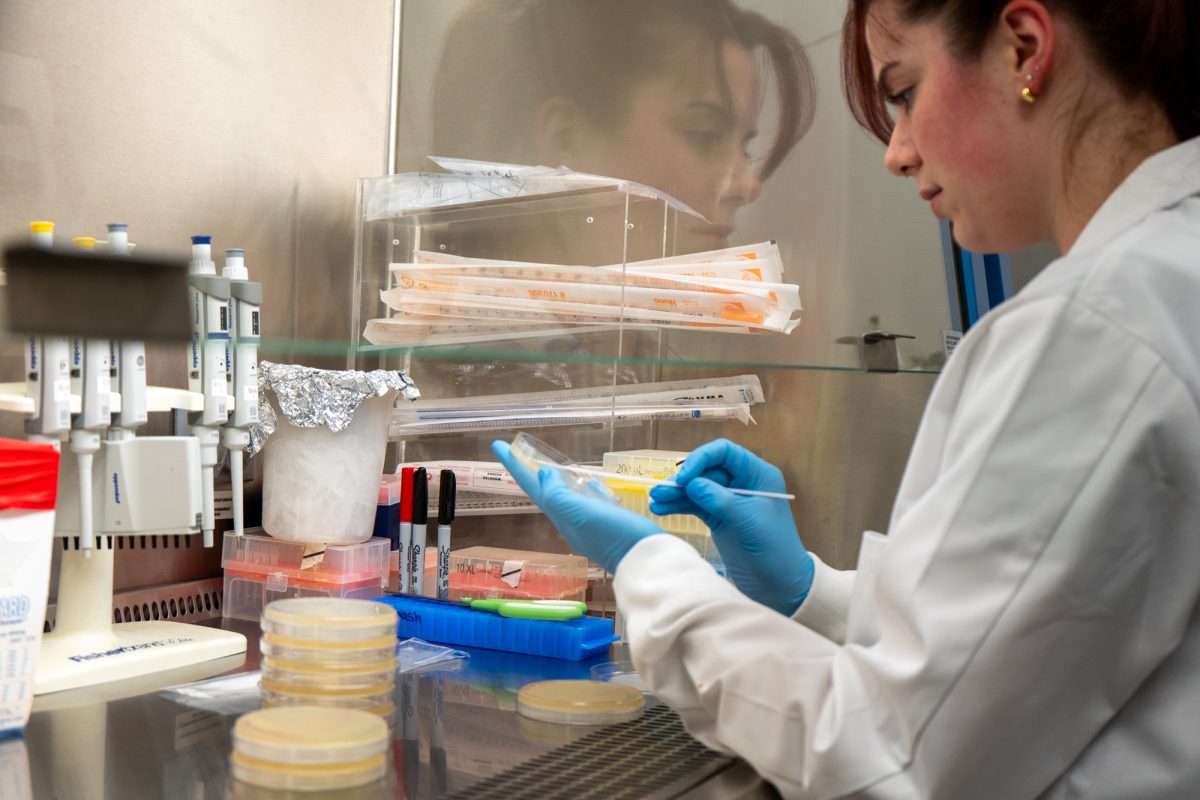Cutting-edge technology that tracks tidal movements will help lessen the impact of hurricanes and improve living conditions along the Gulf of Mexico.
The new radar system is under the control of the Geochemical and Environmental Research Group (GERG) at Texas A&M. The goal of the project is to create a net of radars to monitor conditions in the Gulf Of Mexico that will make the area safer for all who use it or live around it.
Tony Knap, director of GERG, said the project is designed to be operational for years to come and there are many benefits that come from having such an advanced system in place.
“It gives us current speed direction and also wave height,” Knap said. “It also has an IAS system which is a system that allows us to identify ships — where they are particularly good in search and rescue. So if a ship goes down or someone goes in the water, we’ll know very accurately where the person is drifting.”
A challenge of the project has been getting power to the more remote areas of the coast. In some cases, solar panels must be installed to generate power for the radar.
“There are some areas on the coast of Texas where there is no power, in the middle of nowhere,” Knap said. “You have to find a site that has power and has connectivity to the next site. In some places, we’re going to have to put really large solar arrays to power them, so we have to use low power and we have to have Internet to get the data back.”
The radars themselves are self-contained in trailers, with two antennas that transmit and receive data. They operate on a Doppler shift, but unlike weather radars, they are high frequency.
“In other words, they’re way over the horizon,” Knap said. “Normally, a radar just works within the scan of the antenna. These work on Doppler shift, but they bounce from the surface of the ocean to the ionosphere and back again.”
These radars are going to work in tandem with the Texas Automated Buoy System, another project by GERG.
“The Texas General Land Office funded us to run the buoys, and we’ve done an initial test and so far we have a perfect correlation between the buoys and the radars,” Knap said. “The buoys provide us with a calibration set and what this does is broaden it.”
Dr. Barbara Kirkpatrick is on the Board of Directors for the Gulf of Mexico Coastal Observing System (GCOOS). Kirkpatrick describes the goals of GCOOS as being like the National Weather Service for the Gulf.
“Our vision is to outfit the Gulf with ocean weather stations similar to what’s on land,” Kirkpatrick said. “They [GERG] are adding to the ocean observations that my organization has the vision to have covered throughout the Gulf of Mexico.”
Robyn Blackmon, the Communications Manager for the College of Geosciences, said the project puts A&M in a position to monitor earth systems — this one particularly in the Gulf.
“The long term plans for this project are to have enough radars, information and data gathering implements in the area that we can help the coastal communities in terms of mitigating hurricanes, watching tidal movements, watching ocean health such as algae growth, and certain weather phenomenon that affect the actual health and chemical composition of the ocean,” Blackmon said.
Blackmon said it is a program that will help the people who live on the coast in addition to providing the opportunity for student researchers to participate.
“One of the coolest things about this whole thing are the opportunities it creates for student researchers, both at the undergraduate and graduate levels,” Blackmon said. “That is the main thing that motivates people like Tony, that he can integrate and include so many student on this project, and they get real world experience, and have opportunities to see real type data and how that affects their research, and ultimately have some impact on their career.”







